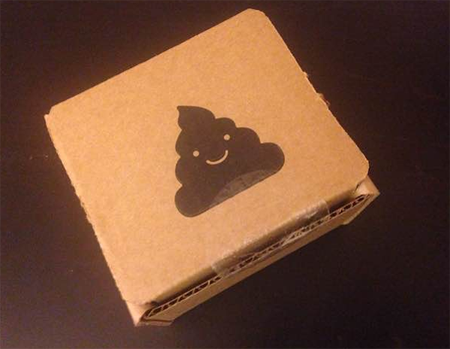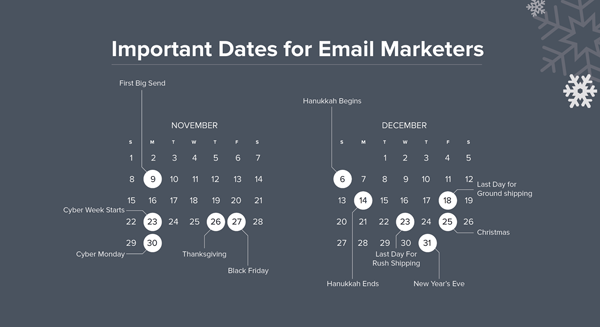2015 Holiday Playbook: 8 Tips Marketers Need to Know

:: Miles Williams, Movable Ink ::
The holidays may be the most wonderful time of the year for most, but can cause marketers lots of stress.
No matter how many holiday planning seasons you've been through, this time of year always seems to creep up without warning. Below is an email playbook to help you stay focused and create awesome holiday campaigns.
1. Keep Time In Mind
Long gone are the days when Christmas promotions started in December. Companies start mailing for the holiday season right after Halloween, and campaigns can last for months. It's important to plan and execute with this framework in mind, as it can completely alter the messaging, length and tone of your campaigns.
Start early but also automate as much of your email program as possible. Use behavioral data, as consumers react in different ways to holiday messages that start right after the Halloween decorations come down, so using data to keep things personal and contextual will help you stand out from competitors in the inbox.
2. Be Yourself
Consumers are constantly bombarded with holiday promotions. When they all start to sound similar - and too promotional - people tune out. Stand out from the crowd by presenting offers that embody your brand's voice, tone, and feel. Be authentic and genuine, and you'll be top of mind when it's time to make a purchase.
Most brands send out the typical 'Act Fast' or 'X% off deal' promotions. One email that stood out last year, however, was one from Cards Against Humanity. They call themselves, "a party game for horrible people," so it's only fitting that their Black Friday promotion fit the bill. Their promotion was definitely off-color but perfectly on brand.
3. ...Yet Be Bold and Different
Don't stop at differentiating yourself for the holidays - create your own! Several major retailers have used this tactic to both celebrate their brand identity and increase sales. Amazon's Prime Day is a perfect example of this. While the event was certainly surrounded by controversy, the results spoke for themselves.
According to Channel Advisor...[on Prime Day] "Amazon's daily sales in the U.S. were up around 80 percent as of noon Eastern over [the same date in 2014], and sales were up 40 percent in Europe."
4. Content is King
Create killer content to differentiate your brand and engage potential customers in unexpected ways. Stuck on how to encourage interaction that isn't promotional? Think of all the different technologies consumers interact with in a day. Warby Parker did this and created a "See Summer Better" Spotify playlist series for customers to listen to during the summer months.
When planning for holidays, focus on intrinsic motivations...how people 'feel' about a product or brand, and how it impacts their lives. This is a bit more difficult than falling back on classic extrinsic motivators (like discounts or free shipping), but it's far more sustainable and scalable, and typically results in much higher performance and longer-term affinity and loyalty.
5. UGC = Win
Give your holiday marketing efforts a major boost with user-generated content. Create campaigns that ask users to share across channels, which allow you to easily access a new and dynamic library of on-brand content. Bringing this content into email also has its benefits, as different personality types embrace different social channels.
When it comes to sourcing UGC, there are big themes and more specific moments that customers will want to share - Halloween costume selfies, presents, decorations, the changing of seasons - and brands can capitalize on all of these things.
6. No Data? Bad Data? Don't Fret!
Don't panic if you don't have a lot of data on-hand. Data is only useful when it's relevant and provides clearly defined insights; otherwise it can be a major distraction from campaign execution. Instead, leverage real-time marketing tools that allow you to sense information like location, device of email open and time of day to serve up contextual content.
Marketers today have access to lots of data but are challenged to make the best use of it. Use historical data for categorical relevance (shoes vs. dresses, bikes vs. running) and let contextual data drive your campaign strategy. There's no reward for collecting the most data, but there are many rewards for collecting the most conversions.
7. Automate, Automate, Automate
Real-time marketing tools can help you save time. Pulling live information (either from a website or an API) eliminates the need to re-code or remake templates and ensures that openers will always see the most up-to-date offers. For businesses with rapidly changing inventory, it eliminates the possibility of a poor post-click experience due to an expired offer.
While it's important to automate, temper your send strategy - don't become a spammer and send too much. Consumers that open a single email multiple times over the holidays give a strong signal of intent. Contemplate what will happen when the primary offer expires in your email so that you can always surprise and delight in the inbox.
8. Analyze Everything
No matter what your holiday strategy is, it's important to document everything. Why? So that you can learn from it in the future. It also helps to take note of pain points in the creative process, production bottlenecks and other challenges you faced last year. Then, observe your holiday campaign processes this year and debrief to streamline production for next year.
Think about what you can do to make a difference this year (or next), and what will allow you to achieve the toughest of objectives, will make your emails stand out in the market as potentially groundbreaking and award-winning. That's the type of focus that's needed.
Important Dates for Email Marketers
Now that you're a holiday marketing pro, it's time to put the pedal to the metal and start planning. Tip #1 was to keep time in mind, so here's a calendar with all the 2015 dates you need to know:
Miles Williams is the CMO of Movable Ink, where he leads all marketing efforts for Movable Ink. He is responsible for brand development, communications, traffic growth, and driving qualified leads into the sales funnel.









